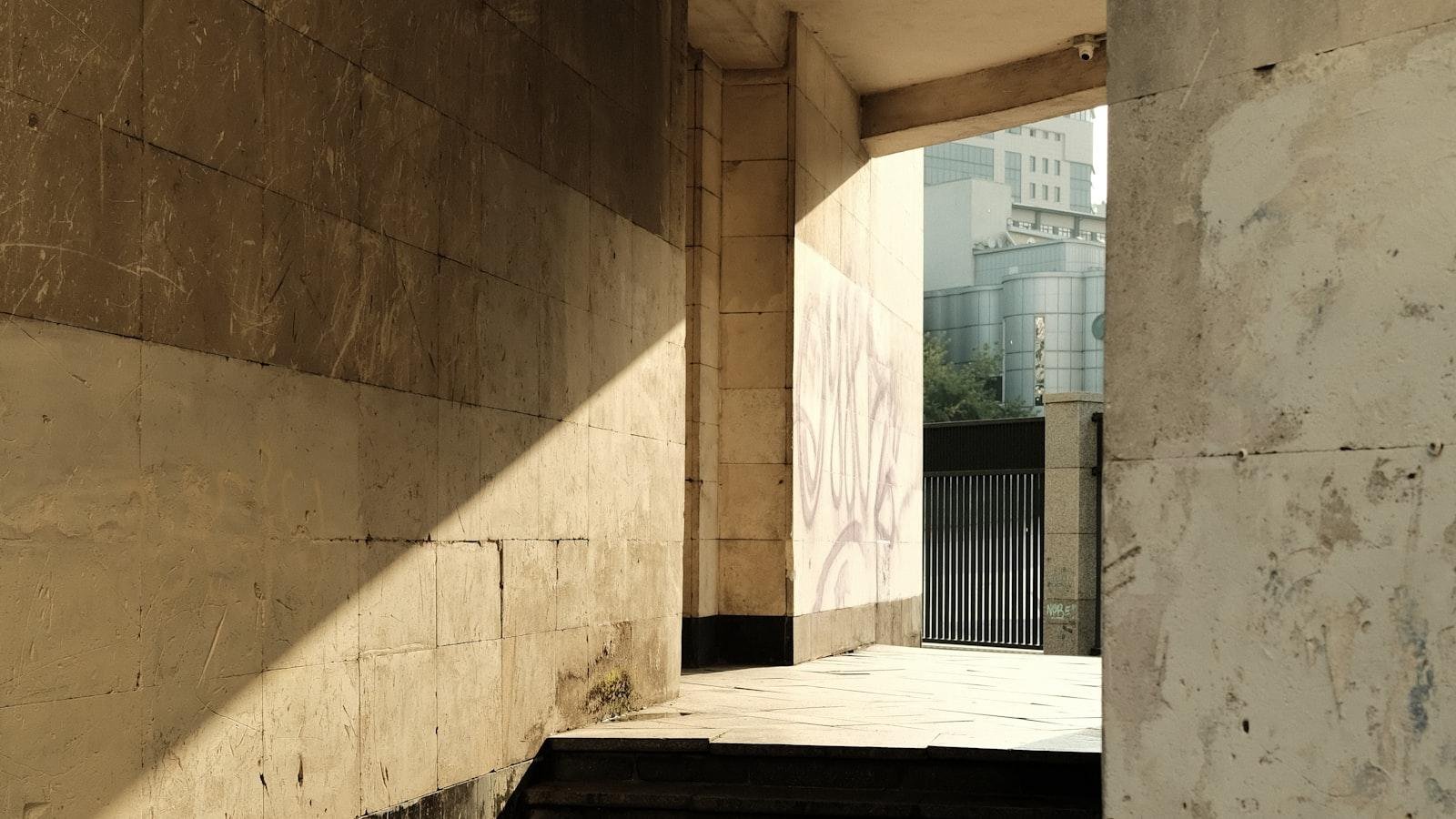Welcome, dear readers, to a journey through the ancient and mystical world of Mediterranean religions. In this blog post, we will be exploring the rich tapestry of beliefs and practices that have shaped the spiritual landscape of the Mediterranean region. From the enigmatic rituals of the Greeks to the sacred traditions of the Egyptians, we will delve into the depths of history and uncover the hidden gems of these fascinating cultures. Join us as we embark on a quest to glimpse the divine and unlock the secrets of these ancient faiths.
Table of Contents
- Overview of Mediterranean Religions: Uncovering the Rich Tapestry of Beliefs
- Exploring the Influence of Ancient Cultures on Modern Faith Practices
- Comparing and Contrasting the Similarities and Differences in Mediterranean Religions
- In Summary
Overview of Mediterranean Religions: Uncovering the Rich Tapestry of Beliefs
The Mediterranean region is a treasure trove of various religious beliefs that have been intertwined with the rich tapestry of its history and culture. As we embark on our journey through these ancient traditions, we are not just exploring different faiths but also catching glimpses of the divine in unique and captivating ways.
From the vibrant festivals of the Greek pantheon to the mystical rituals of the ancient Egyptians, each civilization in the Mediterranean has left its mark on the spiritual landscape of the region. As we delve deeper into these belief systems, we begin to see how interconnected they are, sharing common themes and symbols that bind them together in a web of shared human experience.
Whether it’s the awe-inspiring architecture of Roman temples or the intricate mosaics of Byzantine churches, the art and artifacts of Mediterranean religions offer us a window into the souls of those who once worshipped here. Each carving and inscription tells a story, reminding us of the enduring power of faith and the eternal quest for meaning that unites us across time and space. Let us now embark on this enlightening journey together, as we uncover the treasures of Mediterranean religions and discover the beauty of the divine that shines through them all.
Exploring the Influence of Ancient Cultures on Modern Faith Practices
In the ancient lands surrounding the Mediterranean Sea, the intricate tapestry of faith practices weaved by civilizations such as the Greeks, Romans, Egyptians, and Phoenicians continue to mesmerize and inspire modern believers. As we journey through the remnants of these ancient cultures, we catch glimpses of the divine that have shaped our own faith practices today.
The mystical rituals of the Egyptians, with their awe-inspiring pyramids and intricate burial practices, have influenced our understanding of the afterlife and the importance of honoring our ancestors. The Greeks, with their pantheon of gods and goddesses ruling over every aspect of life, have left a legacy of mythology and storytelling that still captivates us to this day.
The Romans, known for their assimilation and syncretism of various religious beliefs, have shown us how faith can evolve and adapt to the changing tides of time. And let’s not forget the wisdom of the Phoenicians, whose reverence for nature and the elements reminds us of the interconnectedness of all things in this world.
As we delve deeper into the ancient roots of our faith practices, let us not only marvel at the beauty and complexity of these cultures but also reflect on the timeless truths and lessons they have to offer us in our modern spiritual journeys.
Comparing and Contrasting the Similarities and Differences in Mediterranean Religions
In the rich tapestry of Mediterranean religions, we find a myriad of beliefs and practices that have shaped the spiritual traditions of this diverse region. While each religion has its own unique characteristics and rituals, there are also striking similarities that can be observed when we take a closer look.
One of the key similarities among Mediterranean religions is the concept of a pantheon of gods and goddesses. Ancient civilizations such as the Greeks, Romans, and Egyptians all worshipped a multitude of deities, each representing different aspects of life and the natural world. Despite the variations in their names and attributes, these gods and goddesses often held similar roles across cultures, reflecting a shared understanding of the divine.
On the other hand, a significant difference between Mediterranean religions lies in their religious texts and scriptures. While some, like Christianity and Islam, have sacred texts such as the Bible and the Quran, others, like ancient Greek and Roman religions, relied more on oral traditions and mythologies. This distinction highlights the diverse ways in which Mediterranean cultures have approached the transmission of religious teachings and beliefs.
When we delve deeper into the world of Mediterranean religions, we are presented with a fascinating mosaic of beliefs, practices, and customs that reflect the complexities of human spirituality. By comparing and contrasting the similarities and differences among these diverse traditions, we gain a deeper understanding of the ways in which people have sought to connect with the divine throughout history.
In Summary
As we have journeyed through the rich tapestry of Mediterranean religions in this captivating video, we have been granted a glimpse into the divine. From the ancient myths of Greece to the sacred practices of Egypt, each tradition holds a unique thread in the intricate design of spirituality.
May we carry the wisdom and reverence of these diverse faiths in our hearts, weaving a tapestry of understanding and respect for all beliefs. Let us embrace the oneness that unites us all, regardless of the paths we walk.
Thank you for joining me on this enlightening journey. May you continue to seek the divine in your own unique way, and may your spiritual exploration be guided by love and compassion. Until we meet again, may peace and blessings be with you.
Welcome, dear readers, to a journey through the ancient and mystical world of Mediterranean religions. In this blog post, we will be exploring the rich tapestry of beliefs and practices that have shaped the spiritual landscape of the Mediterranean region. From the enigmatic rituals of the Greeks to the sacred traditions of the Egyptians, we will delve into the depths of history and uncover the hidden gems of these fascinating cultures. Join us as we embark on a quest to glimpse the divine and unlock the secrets of these ancient faiths.
Table of Contents
- Overview of Mediterranean Religions: Uncovering the Rich Tapestry of Beliefs
- Exploring the Influence of Ancient Cultures on Modern Faith Practices
- Comparing and Contrasting the Similarities and Differences in Mediterranean Religions
- In Summary
Overview of Mediterranean Religions: Uncovering the Rich Tapestry of Beliefs
The Mediterranean region is a treasure trove of various religious beliefs that have been intertwined with the rich tapestry of its history and culture. As we embark on our journey through these ancient traditions, we are not just exploring different faiths but also catching glimpses of the divine in unique and captivating ways.
From the vibrant festivals of the Greek pantheon to the mystical rituals of the ancient Egyptians, each civilization in the Mediterranean has left its mark on the spiritual landscape of the region. As we delve deeper into these belief systems, we begin to see how interconnected they are, sharing common themes and symbols that bind them together in a web of shared human experience.
Whether it’s the awe-inspiring architecture of Roman temples or the intricate mosaics of Byzantine churches, the art and artifacts of Mediterranean religions offer us a window into the souls of those who once worshipped here. Each carving and inscription tells a story, reminding us of the enduring power of faith and the eternal quest for meaning that unites us across time and space. Let us now embark on this enlightening journey together, as we uncover the treasures of Mediterranean religions and discover the beauty of the divine that shines through them all.
Exploring the Influence of Ancient Cultures on Modern Faith Practices
In the ancient lands surrounding the Mediterranean Sea, the intricate tapestry of faith practices weaved by civilizations such as the Greeks, Romans, Egyptians, and Phoenicians continue to mesmerize and inspire modern believers. As we journey through the remnants of these ancient cultures, we catch glimpses of the divine that have shaped our own faith practices today.
The mystical rituals of the Egyptians, with their awe-inspiring pyramids and intricate burial practices, have influenced our understanding of the afterlife and the importance of honoring our ancestors. The Greeks, with their pantheon of gods and goddesses ruling over every aspect of life, have left a legacy of mythology and storytelling that still captivates us to this day.
The Romans, known for their assimilation and syncretism of various religious beliefs, have shown us how faith can evolve and adapt to the changing tides of time. And let’s not forget the wisdom of the Phoenicians, whose reverence for nature and the elements reminds us of the interconnectedness of all things in this world.
As we delve deeper into the ancient roots of our faith practices, let us not only marvel at the beauty and complexity of these cultures but also reflect on the timeless truths and lessons they have to offer us in our modern spiritual journeys.
Comparing and Contrasting the Similarities and Differences in Mediterranean Religions
In the rich tapestry of Mediterranean religions, we find a myriad of beliefs and practices that have shaped the spiritual traditions of this diverse region. While each religion has its own unique characteristics and rituals, there are also striking similarities that can be observed when we take a closer look.
One of the key similarities among Mediterranean religions is the concept of a pantheon of gods and goddesses. Ancient civilizations such as the Greeks, Romans, and Egyptians all worshipped a multitude of deities, each representing different aspects of life and the natural world. Despite the variations in their names and attributes, these gods and goddesses often held similar roles across cultures, reflecting a shared understanding of the divine.
On the other hand, a significant difference between Mediterranean religions lies in their religious texts and scriptures. While some, like Christianity and Islam, have sacred texts such as the Bible and the Quran, others, like ancient Greek and Roman religions, relied more on oral traditions and mythologies. This distinction highlights the diverse ways in which Mediterranean cultures have approached the transmission of religious teachings and beliefs.
When we delve deeper into the world of Mediterranean religions, we are presented with a fascinating mosaic of beliefs, practices, and customs that reflect the complexities of human spirituality. By comparing and contrasting the similarities and differences among these diverse traditions, we gain a deeper understanding of the ways in which people have sought to connect with the divine throughout history.
In Summary
As we have journeyed through the rich tapestry of Mediterranean religions in this captivating video, we have been granted a glimpse into the divine. From the ancient myths of Greece to the sacred practices of Egypt, each tradition holds a unique thread in the intricate design of spirituality.
May we carry the wisdom and reverence of these diverse faiths in our hearts, weaving a tapestry of understanding and respect for all beliefs. Let us embrace the oneness that unites us all, regardless of the paths we walk.
Thank you for joining me on this enlightening journey. May you continue to seek the divine in your own unique way, and may your spiritual exploration be guided by love and compassion. Until we meet again, may peace and blessings be with you.
Discover more from CaveNews Times
Subscribe to get the latest posts sent to your email.


























![Exploring the Serene Beauty of Nature: A Reflection on [YouTube video title]](https://cavemangardens.art/storage/2024/04/114803-exploring-the-serene-beauty-of-nature-a-reflection-on-youtube-video-title-360x180.jpg)

























